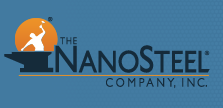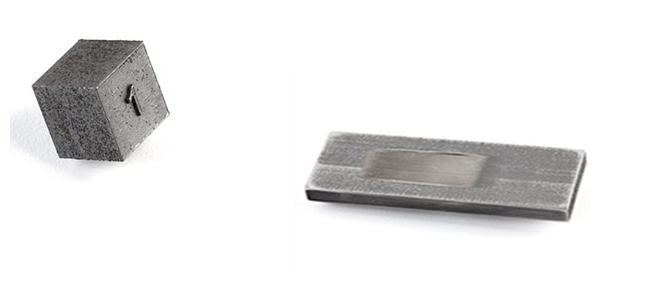 It’s almost unbelievable how quickly the materials space of the 3D printing market has progressed. As more and more companies adopt additive manufacturing processes, the market for the filaments, resins and powders continue to expand. This has led companies, who have been sitting on the sidelines, to consider an entrance into the space.
It’s almost unbelievable how quickly the materials space of the 3D printing market has progressed. As more and more companies adopt additive manufacturing processes, the market for the filaments, resins and powders continue to expand. This has led companies, who have been sitting on the sidelines, to consider an entrance into the space.
One such company is Province Rhode Island-based, NanoSteel Company Inc. As a world leader in proprietary nano-structured steel material designs, and in business since 2001, they feel that now is the right time to begin offering metal powders, particularly steel to the additive manufacturing space.
“Currently, the material options to produce highly wear-resistant parts through additive manufacturing are limited” said Harald Lemke, NanoSteel’s General Manager of Engineered Powders. “By extending the reach of steel into markets currently served by Nano-grained Tungsten Carbide-Cobalt (WC-Co), ceramics, and other non-ferrous metal matrix metal composites, we have the potential to generate cost-efficient wear parts to serve the tooling, mining, energy, and transportation industries in applications such as pumps, bearings, and cutting tools.”
One of the main issues when dealing with steel is its tendancy to crack. Given the limited ductility of materials like what NanoSteel is offering, stresses to parts which are fabricated from steel powders can cause futile cracks, making the parts unusable. NanoSteel has worked diligently with partners to create a steel alloy which features a high volume fraction of hard borocarbide phases.
The steel powder, which is produced using the the company’s metal matrix microstructure process, is capable of being used within a laser sintering machine, and can be fabricated into parts with hardness values of 1000 HV when tested on a Vickers hardness tester.
The number of applications for such a material with the capabilities that NanoSteel’s powder is claimed to possess could be numerous. The company is not stopping here, however, stating that they will continue researching more complex geometries, to widen the scope of this business avenue.
It will be interesting to see if the demand for Tungsten Carbide-Cobalt alloy powders and other materials used for laser sintering wane in the path of NanoSteel’s market entrance.
Let’s hear your thoughts on yet another new material entering the arsenal for additive manufacturing. Discuss in the NanoSteel forum thread on 3DPB.com
Subscribe to Our Email Newsletter
Stay up-to-date on all the latest news from the 3D printing industry and receive information and offers from third party vendors.
You May Also Like
3D Printing Financials: Fathom Struggles in Financial Quicksand During Critical Transition
Facing a year of key transitions and financial pressures, Fathom (Nasdaq: FTHM) has filed its annual report for 2023 with the U.S. Securities and Exchange Commission (SEC). The document outlines...
Latest Earnings Overview for Australian 3D Printing Firms Titomic and AML3D
Australian 3D printing manufacturing firms Titomic (ASX: TTT) and AML3D (ASX: AL3) reported their financial results for the period from July to December 2023, marking the first half of their...
3D Printing Webinar and Event Roundup: April 7, 2024
Webinars and events in the 3D printing industry are picking back up this week! Sea-Air-Space is coming to Maryland, and SAE International is sponsoring a 3D Systems webinar about 3D...
3D Printing Financials: Unpacking Farsoon and BLT’s 2023 Performance
In the Chinese 3D printing industry, two companies, Farsoon (SHA: 688433) and Bright Laser Technologies, or BLT (SHA: 688333), have recently unveiled their full-year earnings for 2023. Farsoon reported increases...
































